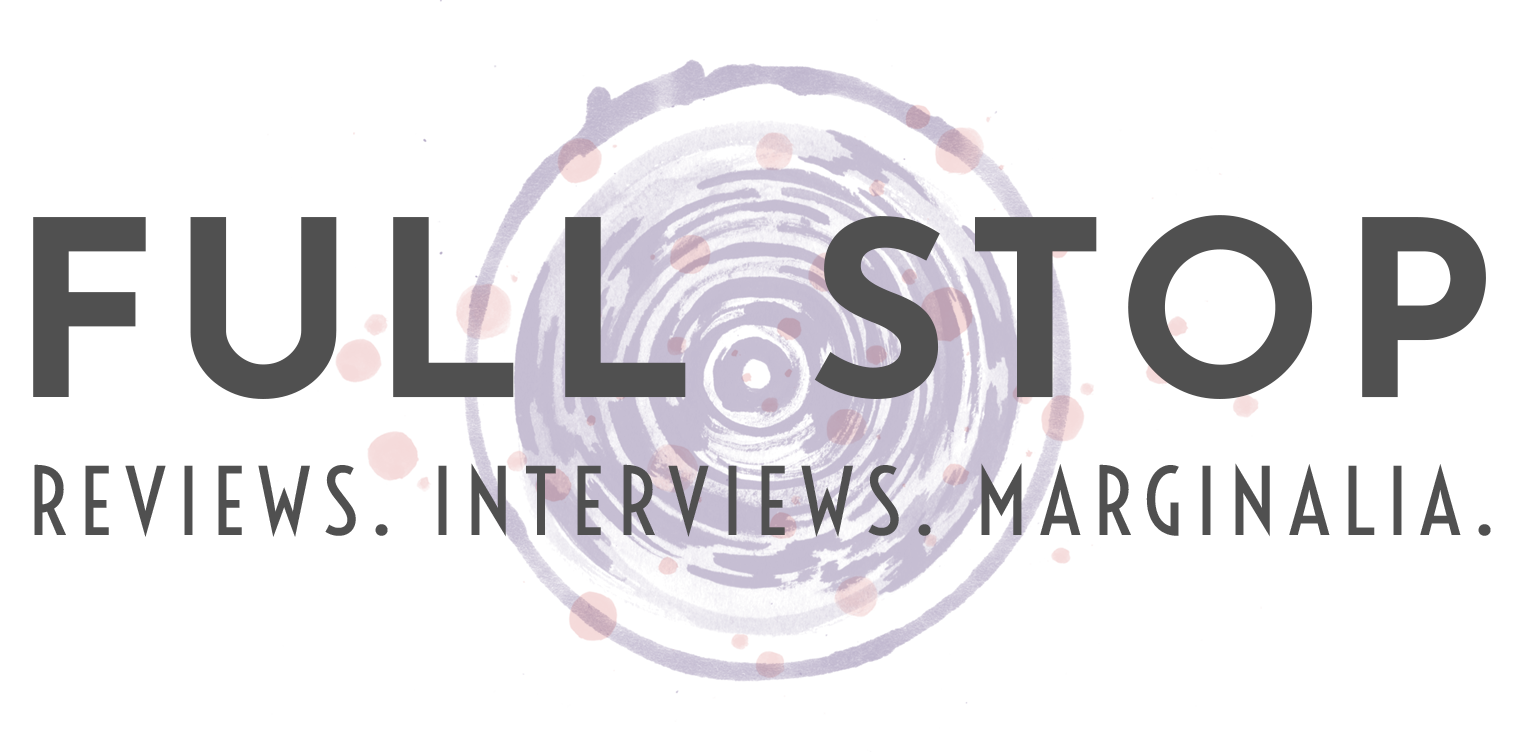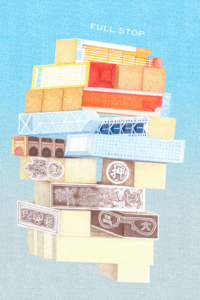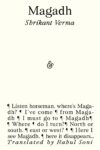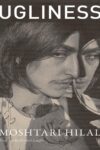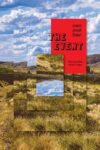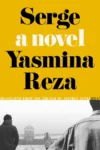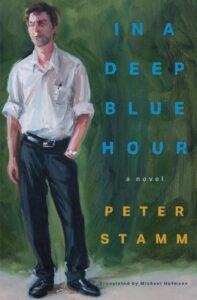
[Other Press; 2025]
Tr. from the German by Michael Hofmann
While reading In a Deep Blue Hour, I was constantly reminded of Hagai Levi’s 2021 miniseries Scenes from a Marriage (a remake of Ingmar Bergman’s 1973 original), each episode of which involves a startling break in the fourth wall. In one, viewers watch Jessica Chastain prepare for an upcoming scene from the perspective of crew members—escorting her onto the set, asking her what time she wants lunch. As she walks, we see Chastain pass off her coat and a coffee cup, scratch her back, and later slide on her character’s wedding ring. In another episode, we watch as Levi passes on some last minute advice to Chastain’s on-stage husband Oscar Isaac.
Several critics suggested that Levi’s wall-breaking was an unsuccessful gambit to suggest the performative nature of the characters’ relationship or to point out the universality of their story. According to these critics, the breaking of the fourth wall emphasizes the fixed roles that the couple has unwittingly—and fatally—assumed in their marriage. But I would venture something more interesting is happening here. Levi seems to be asking: Is the Chastain who viewers watch scratch her back the real Chastain? Or is this yet another role that she is playing? These brief sequences raise questions about the nature of acting and artmaking as well as the act of self-fictionalizing, in which all of us participate.
In a Deep Blue Hour, the latest novel by Swiss writer Peter Stamm, unfolds in precisely the same interstice between documentary and narrative film, reality and fiction, memory and dream. The novel, translated by Michael Hofmann, is narrated by Andrea, a hustling filmmaker who is making a documentary about a successful, older Swiss novelist named Richard Wechsler. As the novel begins, Andrea, having completed an initial round of filming with Wechsler in his adopted city of Paris, is waiting around for him to show up for the second part of filming in the sleepy Swiss village where he grew up.
Andrea’s narrative voice deliberately blends what is happening in the present moment, what has happened in the past, and what will never happen. As such, the novel comes to resemble a spliced film reel, cutting back and forth across time and sometimes leaving the reader to piece together what’s actually happening. Conversations, both on and off camera, unfold in starts and stops in Andrea’s head, and a lack of quotation marks casts ambiguity onto what Andrea is saying, remembering, or simply fantasizing.
Through these flourishes, Andrea’s voice is consistently humorous and, at times, caustic, poking through the artifice at the essence of things. At a funeral, she wonders: “Do they allow dogs in the cemetery? I thought of all the bones, but didn’t say anything. Might have been a bit disrespectful.” A flock of pigeons flying overhead suggests “an air attack that they’d aborted at the last moment.” And although grumpy at times, Andrea remains largely detached: “Presumably I’m not the world champion in strong feelings; I’m pretty pragmatic. A pragmatic hedonist.”
The original documentary project arises as a somewhat desperate gambit. Andrea, alongside her romantic and professional partner Tom, have precious little to show for the past few years of their work, nor are they overly familiar with Wechsler’s writing. It is only later that Wechsler admits privately to Andrea why he accepted their project: “Pure vanity on my part. It’s flattering for an old man to have a young woman interested in him.” Andrea, too, acknowledges being flattered by his “trusting us to find out something about him.”
Wechsler is cagey during their initial filming in Paris, constantly questioning the basis for a film about himself. Although a popular novelist, he insists his life is nothing special: “When we asked him questions about his biography, he said: Why do you want to know that? Ask any person on the street, and I bet his life is more interesting than mine.” The only interesting things ever happen in fiction, he argues. Through constant evasions and prevarications in their interviews, Wechsler leaves them with more questions than answers.
Instead, Wechsler reveals most about himself in the conversations with Andrea that unfold off camera, seemingly inventing his own life philosophy as he goes: “He really seems to be at pains to learn something about himself, his life, and his writing. They are thought experiments that no sooner have they been conducted, then he gestures and swats them aside.” Andrea’s imagination fills in the gaps in what she imagines to be Wechsler’s life. Despite his elusiveness, the two forge an intense intellectual relationship.
But, ultimately, Wechsler never shows up for the second part of their filming, leaving Andrea to wile away several days in his hometown. It’s there that she meets Judith, a married minister who Andrea discovers to have been Wechsler’s longtime lover and whom she gradually befriends. In the meantime, the failure of the project spells an end to Andrea’s belief in filmmaking: “Our film is supposed to show the truth, but I gradually begin to question that, and question whether such a truth even exists.” Returning home, she takes a marketing job for an insurance company and builds a solitary life watching serial killer documentaries in her free time. Without Wechsler, her life loses all color and connection, as if “wrapped in clear plastic.”
However, when Wechsler later gets ill, Andrea resumes a virtual friendship with him, which carries on even after he dies—in memories, in the film clips of him she rewatches, and in her friendship with Judith, forged over their shared connection to the late writer. Their conversations circle around the role of art, our means of self-presentation, and “the meaning and meaninglessness of filming.” Wechsler is consistently skeptical about the power of film vis-à-vis literature: “Books touch us . . . in a way that films and paintings don’t . . . once you’ve read a book, you’re never rid of it. It’s like eating spoiled food, you have to vomit it up.” But it’s not books so much as fiction that he’s truly after.
Among other things, Stamm’s novel is an implicit critique of the autofictional novel. Andrea finds herself drawn, again and again, to the mystery of Wechsler’s life and the story of his romance with Judith. Even while she suspects that “no writer would dare offer anything like it,” Andrea sees bits and pieces of this great love story throughout his writing. Earlier, Wechsler asks her: “This whole autobiographical rigamarole, this so-called autofiction, what’s it good for? That fake genuineness is the biggest lie of all.” For him, literature is “the place where things happened, where I can have things take place that were never real and that I never did.” He adds that “Freedom isn’t in the material, it’s in the way it’s formed. The characters are interchangeable.”
And given the metafictional awareness of artmaking in this novel, Andrea finds herself wondering if she too is a figment of Wechsler’s writing. Lost without a plot, cast adrift in a soulless corporate job and a lonely life, is she merely “a character he didn’t finish writing, left to wander in the limbo of unrealized novel figures, not knowing what to do with herself”? But Andrea herself suggests an audience of her own making: “I sometimes get the sense I’m living my life on a stage in front of all the people I’ve once known or still know.” She is the narrator of this novel, after all.
A scene towards the end of In a Deep Blue Hour evokes most directly the fourth wall breaking of Scenes from a Marriage, emphasizing the role of performance, artifice, and the process of becoming in art. Andrea, seated on a park bench with an indifferent expression on her face, imagines just such a scene as an end to her movie: “The camera reverse-zooms out, the woman gets smaller and smaller, and the park expands. If I were making the film, it wouldn’t be allowed to end like that. So: to work!” With that, the novel lurches back on track. In due time, Andrea will consider a return to filmmaking. But no longer to documentaries—it’s narrative film that she’s after. And so, when the novel truly does end, it does so decisively: “Cut.”
Eamon McGrath is a writer currently based in Brooklyn. He writes about literature from Southeastern Europe on Instagram @balkanbooks. His work has appeared in the Los Angeles Review of Books, Asymptote, and the Chicago Review of Books, among other places.
This post may contain affiliate links.
